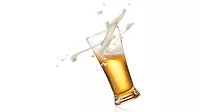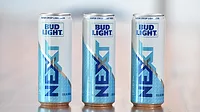2023 State of the Beverage Industry | Diverging performances split beer market
FMBs, imports and non-alcohol biggest drivers for beer category

Image courtesy of Heineken USA
When looking at the performance of the U.S. beer market, analysts have noted varying performance of the traditional beer and the beyond beer segments.
“The U.S. beer market continues to be a tale of two halves,” said Brian Sudano, managing partner at New York-based Beverage Marketing Corporation (BMC), in Beverage Industry’s March issue. “The traditional beer market continues to decline. With the significant slowdown in the growth of beer alternatives: [flavored malt beverages] (FMBs) and hard seltzers, beer declines are at 2.5%. The weakest year in memory. Looking at traditional beer excluding FMBs and hard seltzers, traditional beer declined 3% while alternatives grew modestly.”
Sudano added that traditional beer can be described as being in a long-term decline as growth has come from alternatives like FMBs and hard seltzers.
Jon Berg, vice president of Beverage Alcohol Thought Leadership at Chicago-based NielsenIQ, also described the U.S. beer market as fragmented.
“Some segments are growing, such as imports, while others like craft and seltzers are in decline,” he said in Beverage Industry’s March issue.
Noting the challenges the beer category is facing, Scott Scanlon, executive vice president of BevAl Vertical at Circana, Chicago, noted that players will look to spotlight the segments that performed well in 2022 in the year ahead.
“This remains a challenging time for the beer category, but it will likely get behind imports, FMB and domestic super-premium as they are showing strong momentum in 2022 and look to continue it in 2023,” he said in Beverage Industry’s March issue.
| COMPANY | DOLLAR SALES | % CHANGE vs PRIOR YEAR | CASE SALES | % CHANGE vs PRIOR YEAR | |
| 1 | Twisted | $986,937,083 | 36.4 | $27,009,651 | 28.4 |
| 2 | Smirnoff | $512,897,683 | 5.6 | $12,645,831 | 4.7 |
| 3 | Mike's Harder | $445,240,798 | 6.4 | $11,112,816 | -0.1 |
| 4 | Mike's Hard | $333,589,353 | 7.4 | $8,313,378 | 4.7 |
| 5 | Cayman Jack | $193,501,209 | 46.2 | $5,111,426 | 44.7 |
|
|
Category Total* | $3,954,133,019 | 19.3 | $100,410,321 | 12.5 |
*Includes brands not listed
Source: Circana, Chicago. Total U.S. supermarkets, drug stores, gas and convenience stores, mass merchandisers, military commissaries, and select club and dollar retail chains for the 52 weeks ending May 21.
According to Circana data for the 52 weeks ending May 21, the overall beer market saw sales reach $45 billion, a 2.6% increase, in total U.S. multi-outlets with convenience. However, volume sales were down 3.2%.
Total domestic beer sales were up slightly (0.9%) totaling $26.2 billion with case sales down 4.6%. Of the segments that comprise domestic beer (premium, super-premium, sub-premium and craft), only domestic super premium saw a positive performance in terms of dollar sales and case sales. The segment saw a dollar sales increase of 4.7%, totaling $4.3 billion, while case sales were up 0.5%.
“Despite inflationary pressure and declining disposable income levels, super-premium beers like Michelob Ultra grew substantially over the last year,” said Grace Wood, senior analyst at New York-based IBISWorld, in Beverage Industry’s March issue. “The trend toward premiumization pressed on in 2022.”
Despite this boost from super-premium domestic beers, analysts cautioned that inflation and potential recession concerns could see consumers opt to trade down.
“Domestics are starting to see trade down from premium as consumers are being squeezed with new pricing, this could lead to weak performance for premium in 2023,” Circana’s Scanlon said in Beverage Industry’s March issue.

Although domestic beer is navigating these challenges, data shows that segments such as imports and flavored malt beverages are lifting the beverage alcohol category.
For the 52 weeks ending May 21, import beer sales increased 8.9%, totaling $10.1 billion, with case sales also up 3.8%, according to Circana data.
“Beer imports increased in 2022 as the premiumization trend drew consumers to foreign beers, which are often perceived to be of higher quality,” IBISWorld’s Wood said in Beverage Industry’s March issue. “An inflated U.S. dollar has made foreign beers relatively more affordable for domestic consumers, boosting imports.”
Like many other beer segments, betterment is influencing imported beers, Circana’s Scanlon explained.
An example of this is Modelo Oro. Last spring, Modelo, a brand of Constellation Brands, Victor, N.Y., tested the premium light beer brand in in Charlotte, N.C.; Fresno, Calif., and Houston, Texas. The brand extension now is set to expand nationally, Scanlon noted.
BMC’s Sudano echoed similar sentiments in terms of low-calorie innovations taking place across imported beers.
“Innovation within imported beer is leaning into image and low carb/calorie trends occurring with Heineken Silver, Corona Zero and Modelo Oro,” Sudano explained.
IBISWorld’s Wood added that flavor trends also have influenced the imported beer segment. “Imported beers are also innovating with new fruit flavors to capitalize on this consumer trend,” she said in Beverage Industry’s March issue.
This spring, Dos Equis, a brand of Heineken USA, White Plains, N.Y., announced it is expanding its product portfolio with Dos Equis Lime & Salt ZERO non-alcoholic, Dos Equis Michelada and Dos Equis Mango Margarita.
Packaged in a 24-ounce can, the Michelada combines flavors of tomato, lime, spice and a hint of salt, with the refreshment of crisp beer, the company says. Additionally, Dos Equis Mango Chelada will be hitting shelves this fall. Available in a single serve 24-ounce can, each serving contains 4.1% ABV.
| COMPANY | DOLLAR SALES | % CHANGE vs PRIOR YEAR | CASE SALES | % CHANGE vs PRIOR YEAR | |
| 1 | Bud Light | $4,564,449,548 | -4.5 | $189,198,115 | -10 |
| 2 | Modelo Especial | $3,597,419,499 | 13.9 | $102,066,466 | 8.3 |
| 3 | Michelob Ultra | $3,324,385,828 | 8.3 | $114,862,221 | 3.4 |
| 4 | Coors Light | $2,410,428,447 | 3.4 | $101,152,824 | -2.6 |
| 5 | Corona Extra | $2,408,084,397 | 8.3 | $64,495,455 | 4 |
|
|
Category Total* | $45,089,641,605 | 2.6 | $1,545,472,747 | -3.2 |
*Includes brands not listed
Source: Circana, Chicago. Total U.S. supermarkets, drug stores, gas and convenience stores, mass merchandisers, military commissaries, and select club and dollar retail chains for the 52 weeks ending May 21.
And, with the growing interest in non-alcohol beverages, Dos Equis introduced its first product in the category, which features the addition of lime and salt. Available in six-packs of 12-ounce cans, Dos Equis Lime & Salt ZERO contains less than 0.5% ABV in each can.
“NA Beer has increasingly become a more appealing option, given the variety at shelf,” Circana’s Scanlon said in Beverage Industry’s March issue. “The number of NA Beer SKUs scanning through [Circana] has increased 10% versus [a year ago for the last 52 weeks ending] Jan. 1, 2023.”
Although a smaller segment in the overall U.S. beer category, non-alcohol beer increased 22.8% for the 52 weeks ending May 21 in total U.S. multi-outlets for a total of $308.7 million. Case sales also increased double digits with an 11.6% increase.
IBISWorld’s Wood noted health and wellness has contributed to consumer interest in the segment, but that even though non-alcohol is projected to grow in the coming years, it will be at a decelerated pace.
“Rising health consciousness is urging consumers to limit their alcohol intake,” she said in Beverage Industry’s March issue. “Per capita expenditure on alcohol will grow more slowly over the next five years than in previous years, especially amid inflationary pressures in 2023.”

The beer market has, however, seen much growth contributed from the flavored malt beverage (FMB) segment. Circana data shows that sales reached $3.9 billion, an increase of 19.3%, for the 52 weeks ending May 21. Case sales also posted double digit gains, up 12.5%.
Analysts noted that hard teas have been one of the shining stars of the FMB segment. “Hard teas were the winner in 2022 led by Twisted Tea up in the high double digits,” BMC’s Sudano said in Beverage Industry’s March issue.
As FMBs prominence grows, analysts noted that dedication for the innovators to new, exciting flavors will help fuel the interest in the segment.
“FMBs continue to expand with new flavors and products grabbing drinkers’ attention,” IBISWorld’s Wood said in Beverage Industry’s March issue.
Wood noted that demand for fruit and citrus flavors, like pineapple and passionfruit, are driving innovation in FMBs.
| COMPANY | DOLLAR SALES | % CHANGE vs PRIOR YEAR | CASE SALES | % CHANGE vs PRIOR YEAR | |
| 1 | White Claw Hard Seltzer | $1,934,269,660 | 1.6 | $50,983,445 | -2.4 |
| 2 | Truly | $923,402,485 | -23.5 | $25,554,840 | -27.4 |
| 3 | Bud Light Seltzer | $254,709,013 | -35.6 | $7,549,135 | -38.6 |
| 4 | Topo Chico Hard Seltzer | $208,448,940 | 51 | $5,813,760 | 45.2 |
| 5 | Vizzy Hard Seltzer | $105,736,559 | -25.2 | $3,073,957 | -28.6 |
|
|
Category Total* | $3,848,762,677 | -13.3 | $104,512,149 | -17.7 |
*Includes brands not listed
Source: Circana, Chicago. Total U.S. supermarkets, drug stores, gas and convenience stores, mass merchandisers, military commissaries, and select club and dollar retail chains for the 52 weeks ending May 21.
NielsenIQ’s Berg also called attention to the role that flavor plays in the FMB market. “The U.S. is very flavor orientated with a predominant sweet profile well received with most innovations,” he said in Beverage Industry’s March issue. “Bitter and savory also have a place in the product mix.”
Although FMBs have lifted the overall beer category, the beer seltzer centric, once a prime growth driver, has negatively impacted sales of the market.
For the 52 weeks ending May 21 in total U.S. multi-outlets, beer seltzer centric sales declined 13.3%, totaling $3.8 billion, with case sales in decline of 17.7%, according to Circana data. These declines came as some early entrants took a step back in sales while newer brands captured some of those sales.
“Hard seltzer overall was down modestly with White Claw flat to up slightly while Truly declined in double digits,” BMC’s Sudano said in Beverage Industry’s March issue. “Others such as Simply in FMBs and Topo Chico were positive contributors to segment growth.”
In BMC’s “Alcohol Beverages Trend Analysis in the U.S.” report, the market research firm notes that the beer category has not been able to fill the void left by hard seltzer declines. This, coupled with a projected 2022 volume decline of 2.8% as well as price increases, has BMC projecting a 2.3% decline for beer in 2023.
Looking for a reprint of this article?
From high-res PDFs to custom plaques, order your copy today!







